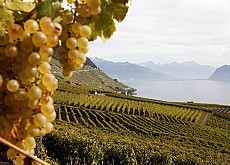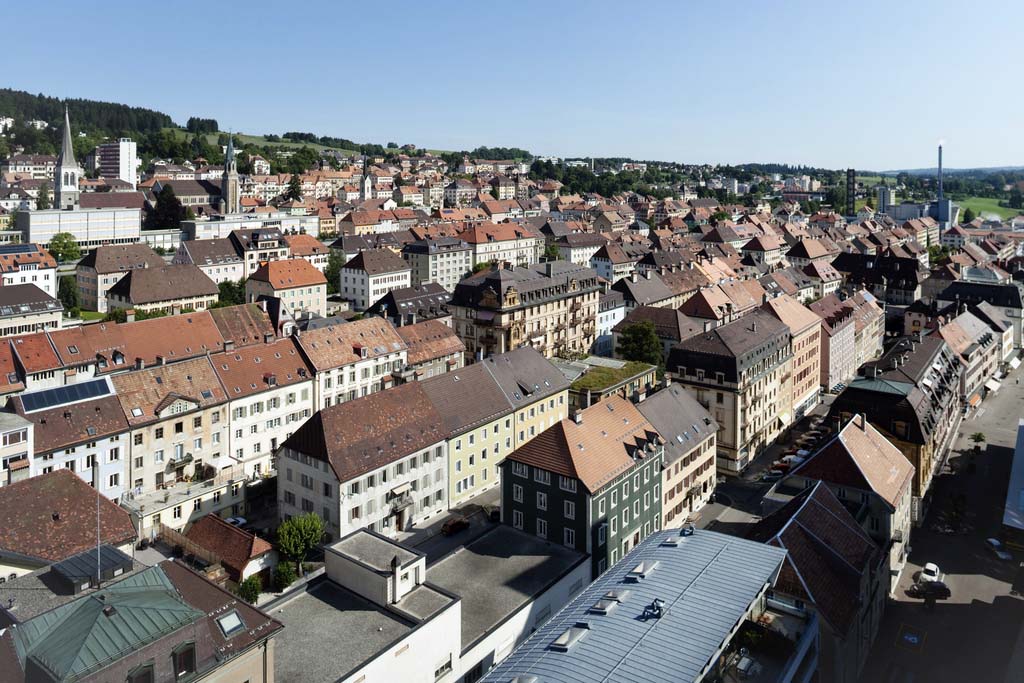Watch industry hopes for good Unesco timing

The first Watch Industry Heritage Day was held on Saturday in the western part of Switzerland – home to some of the biggest names in watchmaking.
At the centre of the celebrations were the industry towns of La Chaux-de-Fonds and Le Locle, in canton Neuchâtel, which are spearheading a campaign to become a Unesco World Heritage site.
The day aimed to show the whole range of this highly important and successful industry, from the large multinationals to the small, specialised workshops.
Among those throwing open their doors to the public – around 15 other businesses will be doing the same – was the AGS workshop in La Chaux-de-Fonds, run by Jean-Pierre Mauerhofer.
AGS, which has just four employees, is a hive of activity – albeit a very quiet and concentrated one.
Mauerhofer himself does the engraving and setting of items of high value – by hand with high-precision instruments.
When swissinfo visited, he was adding the decoration and engraving, including the famous “Swiss made” label, to a platinum watch.
He said the Swiss watch industry’s success was due to several factors.
Sought after
“On the one hand there is the Swiss stamp of origin which is still very highly sought after. Secondly it is the fact that it has been possible to maintain and pass on knowledge and specialised trades,” he told swissinfo.
“This represents a true and real capital which at the moment is finding its expression in luxury watches.”
One such brand is Tissot, which is also taking part in the day. “We always participate in events of this kind; we want to underline our important connection to this region in which we have been present since 1853,” said Maria Ahnebrink, a spokeswoman for Tissot.
“Even if during this time we have become a multinational with more than 16,000 sales points around the world, our base and our roots have always stayed here in Le Locle,” she added.
Unesco bid
The heritage day, which was supported by the Federal Culture Office, was also aimed at helping Le Locle and La Chaux-de-Fonds’ bid to become a Unesco World Heritage Site.
In particular, the initiative wants to highlight the rich architectural and technological legacy that has been generated by the watchmaking industry.
“We realised that this heritage is still relatively unknown, even among the local population,” explained Jean-Daniel Jeanneret, head of the bid.
He added that apart from showing what was already there, “we wanted to underline how the region’s know-how and structures were effectively a testimony to the past and at the same time allow for confidence in the future”.
Past problems
The industry was not always flourishing to such an extent. In the 1980s it underwent a crisis after the market was flooded with quartz watches from Asia.
It first managed to revive its fortunes through mass production, such as with the highly successful Swatch, and then through the turnaround in the luxury watch sector.
The luxury market in particular allows smaller workshops such as Mauerhofer’s to collaborate with larger companies.
Mauerhofer explained that although a large part of watch production is nowadays carried out in a factory, smaller companies also had their role.
“For high-quality items, the fact that a part of the work is carried out by hand by a specialist is an added value. This aspect is even used for publicity purposes for the item.”
Times have changed, he added, but not necessarily for the worse. “At the moment, a craftsman would not manage the production of a whole watch – we cannot compete with the large companies,” he said.
“Nevertheless we have managed to find a profitable way of collaborating – we deal principally with the decoration and provide that touch of class [to a watch] that makes it unique.”
swissinfo, based on an Italian article by Andrea Clementi in La Chaux-de-Fonds
In the first nine months of 2007, total exports for watchmaking amounted to more than SFr11 billion ($9.5 billion), up by 15.2% on last year.
Almost 45,000 people work in the industry (first half 2007 figures) in around 600 companies.
90% of Swiss watchmaking takes place in the Jurassic arc – which extends from Geneva to Basel.
Canton Neuchâtel is the most active with 30% of watchmaking employees.
La Chaux-de-Fonds and Le Locle have launched a campaign to become a Unesco World Heritage Site. Supported by the Federal Culture Office, the two watchmaking towns designated November 3 the first Swiss Watchmaking Heritage Day.
More than 15 businesses in the sector took part in the day by opening their doors to the public. The programme also included visits to museums and film showings on the history of watchmaking in the canton of Neuchâtel.
The two towns are aiming to hand in their official bid to Unesco by the end of the year. A decision is not expected by the United Nations cultural body until summer 2009. Seven Swiss sites are already on the Unesco list.

In compliance with the JTI standards
More: SWI swissinfo.ch certified by the Journalism Trust Initiative



You can find an overview of ongoing debates with our journalists here . Please join us!
If you want to start a conversation about a topic raised in this article or want to report factual errors, email us at english@swissinfo.ch.